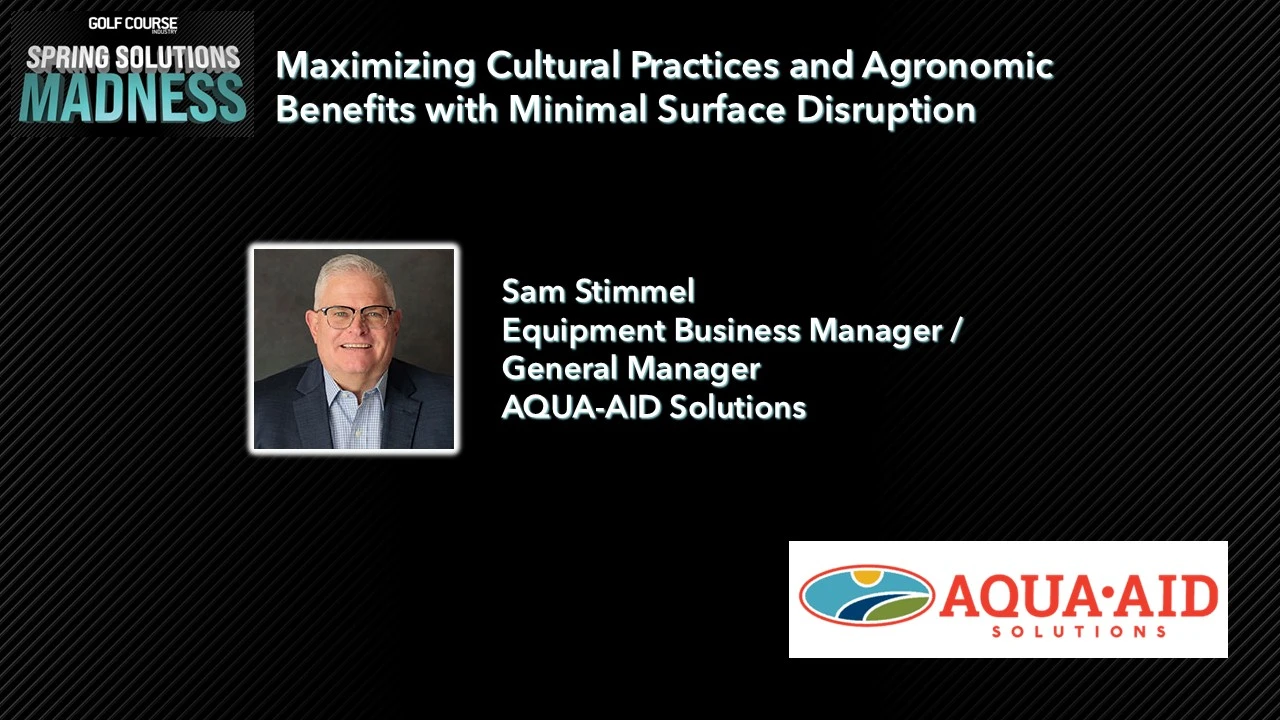While all the manufacturers are continually working on new products and formulations in the long-term, the new product pipeline for the next six to 12 months is primed. By the end of the summer, BASF plans to unveil Emerald, which offers a new mode of action to control dollar spot. Cleary Chemical recently introduced Alude, a phosphonate fungicide that controls pythium. Waiting in the wings at the U.S. Environmental Protection Agency are BASF’s strobilurin fungicide, Insignia, and new sterile inhibitor technology from Bayer.
BEATING OUT THE COMPETITION
With so many new and old chemistries to choose from and portfolios that cover most every major disease, chemical makers are working hard to differentiate themselves from the competition.
“We have a number of industry standards for fungicides – Heritage, Daconil, Banner, Subdue and Medallion. Fungicides are an important percentage of our offering,” said Dr. Joe DiPaola, golf market manager for Syngenta.
The battle over the strobilurin fungicide market, however, is heating up, with Bayer marketing Compass aggressively and BASF preparing to introduce Insignia.
“We take the value approach with all of our products from two perspectives, efficacy and quality formulation,” said DiPaola. “In the case of Heritage, which is the only systemic strobilurin out there, you wind up on the high end of value. It’s not about dollars per 1,000 square feet, it is about performance through the season. Compass and Insignia will not measure up in that category. If you have to make an extra application because you only last 14 to 21 days, versus 28, then what is the cost of a jug or an application?”
Bayer Environmental Sciences, which sells Compass and a number of other top- selling fungicides, is coming after the fungicide business full bore.
“The fungicide market is very important to us and our pipeline with new sterile inhibitor chemistry coming is strong,” said Eric Kalasz, fungicide business manager for Bayer ES.
When it comes to Compass, Kalasz said his company is also taking the value line to the marketplace.
“You can cover 50 percent more ground with the same amount of money,” he said. “If you tank-mix Compass with Bayleton and compare it against Heritage and Daconil, are you going to see a difference in 14 days? Absolutely not. But are you going to save money? Absolutely.”
While Kalasz sees the strobilurin market declining because of resistance issues and BASF’s impending entry, he said there is still plenty of opportunity for Compass.
“We can go after Daconil business on fairways and tank mix with Bayleton or 26GT and see great results,” he said.
While BASF has its strobilurin Insignia under review at the EPA, it is more excited about Emerald.
“Everyone is excited to have a new chemistry to control dollar spot,” said Kyle Miller, senior technical specialist for BASF. “This is a low-toxicity, reduced-risk material that has a single site of action that is different from that of other fungicides on the market. It offers 28 days of control and is both preventive and curative.”
In addition to its ability to meet current resistance problems, Emerald has also shown control of bentgrass deadspot and is safe for use on all major warm- and cool- season turfgrass species.
With these two new products, BASF, which has been better known as a herbicide company, has entered the fungicide business with a full head of steam.
“This is our first turf and ornamental fungicide, but as a company, BASF has 22 percent of the fungicide market worldwide,” said Greg Thompson, marketing manager for fungicides and soil fumigants. “We think we can bring value to the market and meet the needs of superintendents and product gaps.”
Sponsored Content
Lawn and Landscape Marketing on a Budget
Digital marketing can feel overwhelming when you’re working with a limited budget. Websites, SEO, social media, and paid ads can quickly add up, but you don’t need to do everything to see results. By focusing on cost-effective strategies, you can still make a big impact without overspending.
Sponsored Content
Lawn and Landscape Marketing on a Budget
Digital marketing can feel overwhelming when you’re working with a limited budget. Websites, SEO, social media, and paid ads can quickly add up, but you don’t need to do everything to see results. By focusing on cost-effective strategies, you can still make a big impact without overspending.
Sponsored Content
Lawn and Landscape Marketing on a Budget
Digital marketing can feel overwhelming when you’re working with a limited budget. Websites, SEO, social media, and paid ads can quickly add up, but you don’t need to do everything to see results. By focusing on cost-effective strategies, you can still make a big impact without overspending.
Sponsored Content
Lawn and Landscape Marketing on a Budget
Digital marketing can feel overwhelming when you’re working with a limited budget. Websites, SEO, social media, and paid ads can quickly add up, but you don’t need to do everything to see results. By focusing on cost-effective strategies, you can still make a big impact without overspending.
Sponsored Content
Lawn and Landscape Marketing on a Budget
Digital marketing can feel overwhelming when you’re working with a limited budget. Websites, SEO, social media, and paid ads can quickly add up, but you don’t need to do everything to see results. By focusing on cost-effective strategies, you can still make a big impact without overspending.
Sponsored Content
Lawn and Landscape Marketing on a Budget
Digital marketing can feel overwhelming when you’re working with a limited budget. Websites, SEO, social media, and paid ads can quickly add up, but you don’t need to do everything to see results. By focusing on cost-effective strategies, you can still make a big impact without overspending.
Sponsored Content
Lawn and Landscape Marketing on a Budget
Digital marketing can feel overwhelming when you’re working with a limited budget. Websites, SEO, social media, and paid ads can quickly add up, but you don’t need to do everything to see results. By focusing on cost-effective strategies, you can still make a big impact without overspending.
Cleary Chemical has also made a large push in the last year to become a bigger fungicide player. In addition to its popular 3336 fungicide, the company unveiled Endorse last year and recently rolled out a pythium control product in Alude.
“Alude is a new entry into the phosphonate side of the market,” said Cleary’s Rick Fletcher. “It fights pythium, phytophthora and downy mildew, but also has a nutrition impact. There are studies that show phosphorus acid products providing not only fungicidal effects but also minor nutritional and metabolic effects.”
While Cleary does not offer products for every disease out there, Fletcher said the firm has plans to grow the fungicide business.
“Cleary’s line didn’t offer a material targeted at pythium, so this gives us a solution. I think we have enough to offer a sound program, and in the places where we don’t have products we recommend materials to fit in our program,” Fletcher said.
Also sitting on the sidelines to a certain degree is Dow AgroSciences, which is more than happy to watch the other big dogs gun for each other in the fungicide fight.
“If they want to battle and forget about us sliding in the bottom, that’s great,” said Chris Wooley, product marketing manager for Dow AgroSciences. “We are predominantly herbicides, insecticides and then fungicides, so we don’t mind that at all.”
That said, Wooley said sales are up on the year and Eagle and Fore are leading the way on the fungicide side of the portfolio.
“We feel we have the major diseases covered and have what folks need,” Wooley said. “But it is a tank mix, it’s a cocktail approach right now with resistance issues. As long as we have the mainstays to get into the game, we are in pretty good shape.”
Get curated news on YOUR industry.
Enter your email to receive our newsletters.
Explore the July 2003 Issue
Check out more from this issue and find your next story to read.
Latest from Golf Course Industry
- Mountain Sky Guest Ranch announces bunker enhancement project
- GCSAA names Joshua Tapp director of environmental programs
- AQUA-AID Solutions bolsters Sunshine State presence
- Escalante Golf acquires secluded Illinois course
- Tartan Talks 105: Nathan Crace and Todd Quitno
- Disease Discussion 24: Let the turf talk to you
- From the publisher’s pen: Foggy intrigue
- USGA releases Water Conservation Playbook






